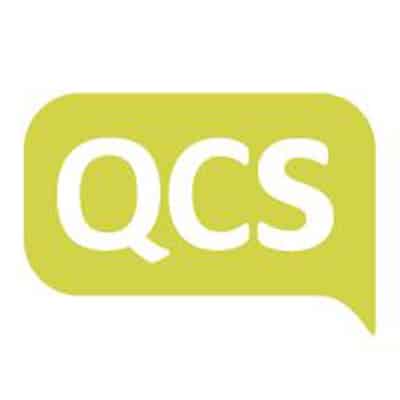Introduction
Regardless of where you work, be that a care home, hospital or a general office, you will find chemicals from sprays to bottles aligning cupboards or cabinets. Whilst most should be low risk, are you aware of the risks posed and the different types of labels on containers?
Chemicals used to keep our hospitals, surgeries and care homes clean to reduce infection, as well as chemicals for other applications all come under The Control of Substances Hazardous to Health 2002 (known as COSHH).
Due to the various applications of chemicals and the risks they can pose to staff who use them, and vulnerable adults who, if the product is not put away, or come into contact with them through staff use; managers need to have controls in place to ensure the safety of all.
Are your chemicals out of control?
Whilst there are many valid reasons for having lots of chemicals, things can get out of hand. Managers need to limit the number of different products they use to both, the lowest risk and lowest number of products. Having products which can have many applications is one way of achieving this goal. Equally important is not to overstock products as this increases the risk. There are limits on the number of chemicals used, you can hold on a site?
So how do I control what is on site?
Two key things spring to mind;
- Firstly, make an inventory of all the products you have on site, remember that hand cleaners, sanitisers, even washing up liquid should be included in this list.
- Secondly, make a list of all the processes which require chemicals on site and try to identify which chemicals are used for these various processes.
Having got an understanding of what is used, by whom and why, you can then start to see where there is duplication of products, reducing it down to one product of the lowest risk for the greatest number of applications. The smaller the range of products, the lower the volume of products on site and the lower the risk your site carries in terms of COSHH materials. Regular stocktaking can keep a lid on the amount of stock you hold and also limit what needs to be re-ordered thus keeping your budget effectively managed.
So how do I manage the risk?
The simplest way to manage the risk is having all your products centrally located in approved COSHH cabinets which are lockable. Ideally, if you have a storage area which is lockable this is preferred however make sure that only COSHH products are in this area. This may mean removing other equipment from this area particularly combustibles or anything which could be a source of fire i.e.: electrics and gas metres etc. I would suggest that if you have utility services like gas and electric in this area, then it is not suitable for COSHH storage. Lighting would need to be sealed, fire rated and not under a staircase.
All products should have a Manufacturers Safety data sheet (MSDS). Manufacturers and suppliers have to supply these and keep you informed of any updates – they can often be found on the supplier’s website for easy download.
Know your environment and risk?
All managers have a duty to protect their staff from harm “as far as is reasonably practicable” under the Health and Safety at Work Act 1974. Part of understanding risk is being aware of your environment i.e.: where the products will be used and also the effect their use will have on workers and those in the area where the work is being carried out. The MSDS will explain the risks associated with the product under section 2, any Personal Protective Equipment (PPE) needed in section 8 and a list of harm and precautionary ratings in section 16.
Data sheets – what is required?
As stated earlier, all products are required to have an MSDS which provides the information needed to use the product safely and highlight any hazards to be aware of. All MSDS now have 16 sections included as follows:
- Identification of the substance/mixture and of the company/undertaking
- Hazards identification
- Composition/information of ingredients
- First aid measures
- Firefighting measures
- Accident release measures
- Handling and Storage
- Exposure controls/personal protection
- Physical and chemical properties
- Stability and reactivity
- Toxicological information
- Ecological information
- Disposal consideration
- Transport Information
- Regulatory information
- Other information
You many have noticed that some of the labels (pictograms) have changed from yellow to white backgrounds and some hazard types are different, likewise, the Risk ratings have changed to Hazard and Precautionary statements. Changes from The Chemicals Hazard Information and Packaging for Supply 2009 (CHIP) Regulations was revoked on 1st June 2015 and replaced by the European Regulations – Classification Labelling and Packaging Regulations 2015 (CLP). This harmonised the control of chemicals across Europe. All products now have to conform to this new standard including the MSDS.
Having the right suppliers?
Most reasonable sized social care providers will have what is known as an approved supplier, a company which has been centrally vetted as meeting the company’s standards and core objectives in supplying high standards of quality materials and products. By having this in place local care homes, surgeries etc. can place orders through a central source making this easier and more efficient to manage. It is, however, important that local staff only use the products provided on the approved suppliers list and not go down to the local shop for supplies.
NB: All products must remain in original containers where possible (consider small containers to limit spillage and manual handling)
Local management of chemical risks?
Like with all applications that have risks associated to them, all COSHH products need to have a COSHH risk assessment completed for each product. In recent years, the HSE has clamped down on companies who simply copy and paste information from the data sheet onto their risk assessments. An effective risk assessment must assess the local risks and the environment that tasks are carried out in – they may be different from a sister company in the next town. All risk assessments must describe the active or work process in which the product is used and include local measure to manage that risk.
To effectively manage all COSHH, having an e-folder or hard copy folder, all COSHH risk assessments and MSDS can be located along with a risk register (list of products, data of last assessment or review etc.). I would suggest this is an effective way to keep on control of COSHH so it does not control you.
Accidents will happen?
No environment can be totally free from mishaps occurring, thus having suitable welfare facilities, access to a fire extinguisher (where it has been identified a risk) and spillage equipment for leaks, should be part of local control measures in place.
Do my staff need training?
All staff are required to receive suitable and sufficient induction, instruction, training and supervision in all their work activities they are tasked with at no cost to the employee. Such training will include COSHH awareness, correct use of PPE, spillage awareness etc. Again, where accidents occur, HSE inspectors will always look at the training of individuals involved and what measures a company has put in place, to ensure workers are equipped to undertake their role safely. Sadly, in a number of cases companies have been negligent of not providing workers with the training to undertake the work task and have been prosecuted accordingly.
Show me the legislation?
The key piece of legislation for COSHH is The Control of Substances Hazardous to Health 2002 and the overarching legislation of the Health and Safety at Work Act 1974 s2 & 3.
QCS Systems
QCS provide a range of policies and procedures, templates etc. to support your service in meeting the requirements of the Health and Safety and COSHH legislation.







